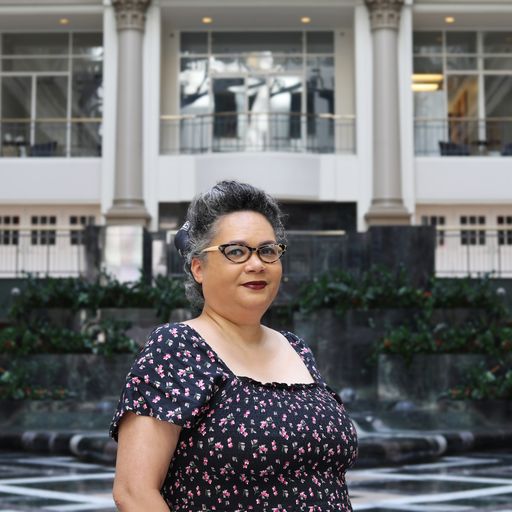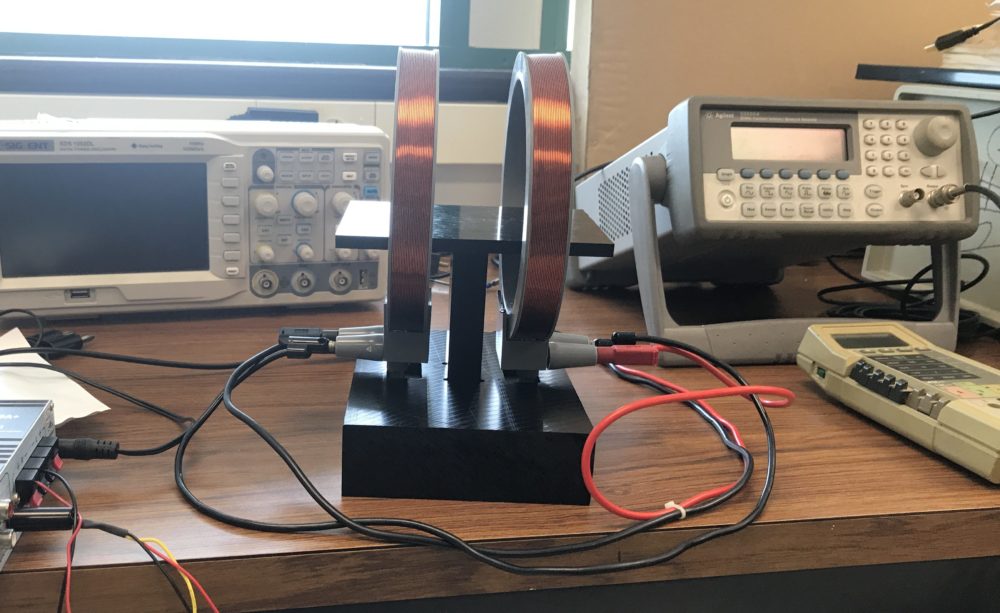After Abigail Dela Paz graduates from the University of Delaware in May, she hopes to land a job in the medical device industry — and as an undergrad researcher in the biological sciences department, she’s already built a device that could potentially lead to advances in pulsed electromagnetic field therapy.
The therapy itself — applying undetectable electromagnetic pulses on the body — is being used for the healing of bone fractures, and drug-free pain reduction.
“We know they do work, but we don’t know how they actually work,” said Dela Paz, a Fall 2017 University Innovation Fellow via Stanford University’s Hasso Plattner Institute of Design. “Once we learn the how, we can improve that technology.”
While existing devices on the market like the Oska Pulse are mostly wearable and apply electromagnetic pulses to an affected area externally, Dela Paz’s research (“The effect of pulsed electromagnetic fields on bone integrity through activation of voltage-sensitive calcium channels”) studies the effects on cells and aims to increase the effectiveness of these devices.

Dela Paz. (Photo via LinkedIn)
“We’re using it to see what exactly is happening and what channels are being activated. Down the line we’d like to use this information to develop a device for preventive measures in osteoporosis development,” she said, especially in people with disuse osteoporosis. “Bones grow through stimulation, so, for example, people who are really sick or injured and on bed rest are not properly stimulating their legs.”
Another potential beneficiary of pulsed electromagnetic field research are astronauts.
“When they go to space in that micro-gravity environment for extended periods of time, they’re not properly loading their bones, so they are at risk for developing osteoporosis as well,” she said.
Dela Paz’s project itself is not wearable, since its focus is on observing cells, not people.
“Currently, since I’m only working with cells, my prototype is very rough, but it does what it needs to do,” she said. “It’s essentially just two coils that are hooked up to a power source, but further down the line it could be developed to decrease the size making more wearable.”
Dela Paz will likely not be involved with the project if it evolves: “Since it’s my undergraduate research, the intellectual property belongs to my [principal investigator] and the school,” she said.
Research like this can lead to product development, such as TheraV, which had its earliest research done in a UD lab. In fact, the vibration therapy TheraV uses influenced Dela Paz’s choice to study pulsed electromagnetic fields.
“We were trying to think of alternatives to vibrations,” she said, “and that’s how we came across pulsed electromagnetic fields.”

This editorial article is a part of Technical.ly's Growing Industries month, when Technical.ly Delaware is focusing extra reporting on the topic of biotech.
Before you go...
Please consider supporting Technical.ly to keep our independent journalism strong. Unlike most business-focused media outlets, we don’t have a paywall. Instead, we count on your personal and organizational support.
Join our growing Slack community
Join 5,000 tech professionals and entrepreneurs in our community Slack today!





